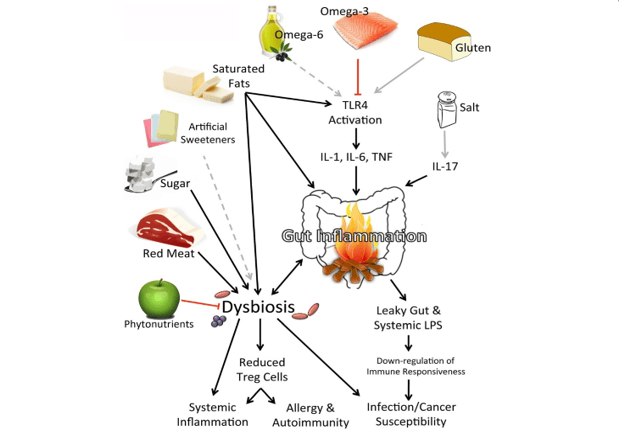With increased lifestyle changes and emergency of chronic illnesses in the 21st century, food, obesity and fat advocacy have become essential. Obesity, especially child obesity, and overweight that is associated with food and fat has been regarded as epidemics in both developed and developing countries. While there exist several movements that support fat acceptance and obesity, food, obesity, and fat advocacy is vital in the modern century as food industries and organizations have embraced measures that promote healthy eating.
Due to the adverse health effects connected with obesity and overweight, various organizations and food institutions have introduced measures and propositions that can help reduce these challenges. For instance, the American Heart Association, the American Cancer Society, and the American Diabetes Association suggested for individuals to cut off fat to not more than one-third of their everyday calories (732). In addition, just like other groups, these organizations pointed out that people had to limit the usage of saturated fats and trans-fatty acids, instead, they recommended monounsaturated fats as helpful for blood lipids. Similarly, health professionals have advocated for the elimination of junk food in schools (Smith, 737). Most importantly, recently, McDonalds agreed on decreasing the production of fresh fries and adding small portions of apple slices instead (Aspray et al. 126). The company also cut calories in their meal by 20% and sodium by 15%. McDonalds has played a big role in healthy eating involvement because it has also reduced the use of flavors and saturated fats on its meals. The company has also included nutrition labelling in promoting healthy eating. This helps the consumers to make knowledgeable food choices, therefore increasing the possibility of upholding dietary practices and decreasing risk of chronic illnesses.
Considering the increased cases of obesity and overweight in both children and adults, visual elements are employed to support health eating and lifestyles. The following figures are some of the visual elements that can be used in food, obesity, and fat advocacy:
Figure 1: A Visual Element on the unhealthy foods increases cancer, diabetes and heart disease susceptibility (Myles, 7).


Figure 1 indicates that the current diet that provokes susceptibility to cancer, infections, autoimmunity, and allergy. Besides, the unhealthy foods include the red meat, sugar, saturated facts, artificial flavors, salt, and can instead be replaced with health food components such as omega 3 and phytonutrients. Therefore, visual elements are used as means of activism to appeal for healthy foods and lifestyle.
Table 1: List of healthy and unhealthy foods
| Health Meals and Drinks | Unhealthy Meals and Drinks |
| All kinds of water | Soft drinks |
| Sugar free cereals and cereal bar | Red meat including beef burgers |
| Fruit yoghurts | Sugared cereals |
| Pasta | French fries |
| Boiled and baked potato | White bread and cake |
| Fruits and fruit juices | Margarine and butter |
| Vegetables | Saturated oils |
Table 1 illustrates the unhealthy meals to avoid, and the health meals endorsed by organizations to help prevent physical and psychological illnesses.
Despite the positive influences and possibilities that have transpired from healthy eating activism, various individuals and organizations oppose the push for reduced fats, health foods and prevention of obesity. As a result, various movements supporting fat acceptance have been developed to transform the attitudes towards the overweight and obese people as unhealthy (Smith, 737). These movements’ viewpoint is based on the idea of acceptance. That is, obese and overweight people are not unhealthy, rather they need concentrate on their level of fitness other than being thin or fat.
Overweight which is caused by excessive intake of fats and high consumption of fast foods has become a global health problem. Obesity, fat and food activism is fundamental today because both obesity and overweight are perceived to have significant effects of physical and psychological health. In particular, the advocacy has been inspired by the fact that overweight individuals have been associated with high risks of heart diseases, cancer and type 2 diabetes (Smith, 732). Overweight and obese people are usually subjected to discrimination and prejudice. In addition, children from both developed and developing countries are being exposed to the advertising commercials for food products that support intake of high percentage of sugar, fat, and salt (Reisch et al. 3). Modern sedentary lifestyles and the busy schedules in the school and work environment call for diets that are centered on unhealthy fast foods, soft drinks, energy dense snacks Most importantly, soft drinks, sugared breakfast cereals, flavorful snacks constitute the food advertisements. Therefore, to ensure that individuals are not affected by unhealthy eating, food, fat, and obesity endorsements should be encouraged in all parts of the world.
It’s evident that food, obesity, and fat advocacy is central in the current global century that has been characterized by unhealthy eating patterns and sedentary lifestyles. Overweight and obesity has been associated with chronic illnesses such as cancer, type 2 diabetes, and heart diseases. Therefore, there is need for food industries and the relevant organizations to promote healthy eating and implement measures that will ensure fit foods are produced and sold in food joints, and supermarket stores among other areas.
- Aspray, William., Royer, George. & Ocepek, Mellissa. Formal and Informal Approaches of Food Policy. Springer, 2014
- Myles, Ian. “Western diet on immunity.” Myles Nutrition Journal, vol. 13, no. 17, 2014, pp. 1-17
- Reisch, Lucia., Gwozdz, Wenke., Barba, Gianvincenzo., DeHenauw, Stefaan., Lascorz, Natalia. & Pigeot, Iris. “Experimental evidence on the impact of food advertising on children’s knowledge about and preferences for healthful food.” Journal of Obesity, vol. 2013, 2013, pp. 1-13
- Smith, Andrew. The Oxford Encyclopedia of Food and Drink in America (2nd ed.). Oxford University Press, 2013

